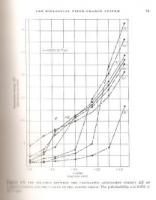Kyle M
Member
- Joined
- Mar 20, 2016
- Messages
- 1,407
Had you actually read the paper Kyle? Do you even know what the authors "say"?
I skimmed it, and I'm specifically referring to claims that they are measuring only the cation adsorption potential of mitochondrial membrane with no crossover from mitochondrial protein adsorption of cations.
Edit: Isn't the whole Ling hypothesis that the action is not at the membrane but at the proteins? Wouldn't analysis of mitochondria be simply a microcosm of the cell, and to say that the cationic potential is due solely to the membrane action is akin to saying cellular cationic potential is?






